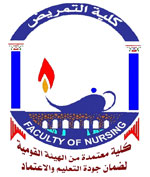Background: Tuberculosis (TB) is a major cause of illness and death
worldwide, particularly in low and middle income countries. TB is an airborne
bacterial infection caused by mycobacterium tuberculosis organism, it is a
primarily affects on the lungs, although other organs and tissues may be involved.
Almost one third of the world population, are infected with TB. In 2010 over 9.2
million people have active TB disease, worldwide. Aim: The study was carried out
with the aim to assess knowledge and attitude of TB patients and their family's
disease. Setting: This study was carried out in 3 districts with their villages were
chosen randomly (Mania city- Beni-mazar & Mallawy)from Minia governorate. A
cross sectional research design was used in this study. the period of data collection
took 5 months from (February to June 2012). Sample: The total number of study
samples was 125 out of 220 TB patients. Besides 173 family caregivers personnel's
from the three districts. Tools: The investigators need two tools for data collection;
tool (1): To assess knowledge of TB patient and their family caregiver members
about TB, it included 3 parts and tool (2): A rating scale used to assess attitude of
patient and their family caregiver members about TB disease. The results revealed
that; nearly a half of TB patients were in the age group 20-<40 years, but for
family caregivers personnel in age group 40-60 years. The mean age average of patients and they family caregivers was34.8±13.7, and 38.8±13.9 respectively.
More than a half of the patients were females and more than a half of them were of
poor knowledge. While more than one fifth of male had good knowledge. And
there was no statistically significant difference. But the relations between the
patient' Knowledge of TB disease and they' gender, education, & occupation were
high statistically significant differences. Conclusions; 1)The majority of TB.
patient had poor knowledge, more than a half of the family caregivers had poor
knowledge. 2)More than three quarter of patient and their family caregivers had
negative attitudes about the disease. Recommendations: 1)-Increasing the areas of
NTBP implementation to include general hospitals and private clinics that is
essential. 2)-Continuous training of the health care providers to upgrade their
scientific knowledge that is vital for teaching patients. 3)-Designing health
educational Programmers to increase patients' awareness of the disease. This is
crucial for infection control. 4)-Widespread public health education campaigns are
required to decrease stigmatization and discrimination associated with TB
Research Department
Research Journal
AAMJ
Research Member
Research Publisher
NULL
Research Rank
2
Research Vol
Vol. 11, No. 3,
Research Website
NULL
Research Year
2013
Research_Pages
NULL
Research Abstract

